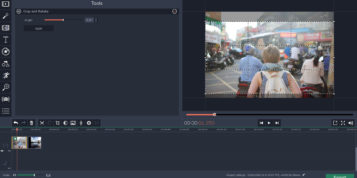The online video ad-scape is at a curious juncture: it is becoming smarter at one end and dumber at the other. This is an interesting dichotomy – and one that reflects the ever-growing number of disparate viewing devices being used by consumers.
Online viewing is booming and banners are being usurped by online video ads that can be used to track user engagement much more effectively than their static cousins. With an increasing number of video ads, advertisers can see whether the skip button was clicked and/or whether the ads were muted by the consumer.
But it’s not all plain sailing. A significant proportion of viewers are using proprietary devices such as connected TVs and games consoles to view content, making it more difficult for publishers and advertisers to use video ads. While it’s possible to insert a pre-roll on some of these devices, inserting a mid-roll can be problematic. As a result, the classic TV ad experience of 2-3 ad breaks per programme can’t yet be offered across the board by online content providers.
Fortunately, two ad serving technologies designed to help ease the device fragmentation problems are starting to make an impact: native player ad delivery (for ‘smart’ ads) and server-side ad stitching (for ‘dumb’ ads).
Native player ad delivery is used today on desktops, browsers on Apple devices and native applications on iOS and new versions of Android. With this ‘smart ad’ technology, when the user clicks the “Play” button, the player calls for an ad. By using the native player, the ad is much “smarter” and advertisers have more options: the ad can be configured to be skippable/non-skippable and a call to action with an option to click on it can be added. This approach also allows improved targeting based on the age, geo-location and the context of the ad environment (e.g. website, article) and improved analytics.
Server side ad stitching lets publishers reach pretty much any device that can be used to stream video – almost all Android browsers, connected TVs, Xbox, video aggregation mobile apps and Chromecast. This ‘dumb ad’ approach stitches the ad to the video file, removing the need to specifically integrate with a native player. Basically, if the device can play the video, it can also play the ad. Ad stitching is a good option for campaigns focused on reaching a broad audience and can help to significantly drive fill rate.
That said, dumb ads don’t have easy-to-set-up skip buttons. And some of these stitched ads are very easy to skip, by simply skipping forward using the scrubber – but in most cases the advertisers will not even know the ad has been skipped. In addition, user targeting is limited and publishers have much less intelligence about how the ads perform.
The good news is that online video monetisation – whether via smart/dumb ads or via other payment models – is growing in popularity and significant progress is being made. Dumb ads are a good tool for now, but smart ads will make huge gains over the next couple of years as technologies advance that can overcome today’s device fragmentation issues and personalised targeting becomes increasingly the norm.
Kaltura Connect 2014 – The Video Conference – will take place in New York City on June 16-18. Now in its 4th year, Kaltura Connect is the ‘go to’ video industry conference, with more than 1,200 video experts, technologists, executives, and thought-leaders expected to attend this year. Learn more and register today at http://connect.kaltura.com.






